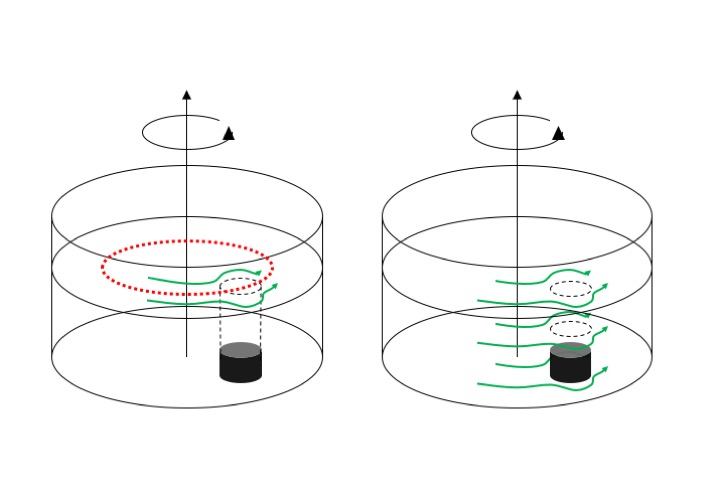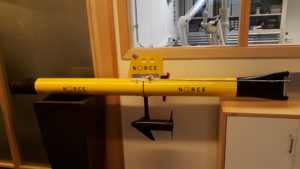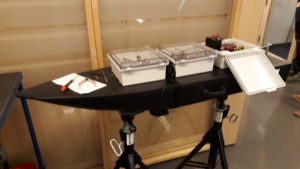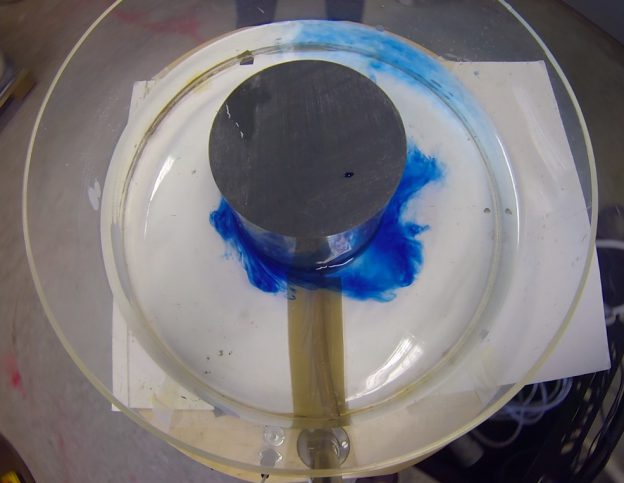When I was visiting Elin a couple of weeks ago, I was hoping to set up an impressive Taylor column experiment. Maybe my expectations were too high of what is possible to achieve in terms of visualization and I got too convinced of my own sketch to appreciate reality? 
In any case, the picture at the top of this post is as good as it got. We see that the blue dye is stopped by something located above the hockey puck (the Taylor column!), but all the turbulence in the dye curtain makes it difficult to see what is directly due to the Taylor column and what is just pretty 2-D turbulence.
But I haven’t given up on this! Here are a couple more attempts at Taylor columns in a tank under slightly different conditions. And if you have any suggestions, I’d love to hear them! 🙂




